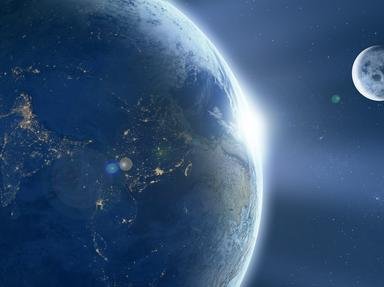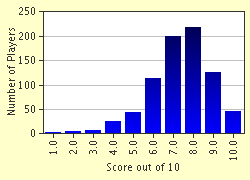Quiz Answer Key and Fun Facts
1. There were three main theories regarding the moon's origin before the Apollo missions. Which one of the following is NOT one of those first three?
2. After the Apollo expeditions and the data that was gathered during them, scientists were able to put forward a more educated hypothesis regarding the Moon's origin. What is the name of this theory?
3. Luna, Artemis and Selene are amongst the many names given to the Moon by ancient cultures in their mythologies.
4. Ancient observers thought that the dark spots on the Moon were what?
5. The Moon rotates on its own axis.
6. What is the name of the astronomical phenomenon that occurs when the Moon passes through the shadow cast by the Earth?
7. What is the name of the deepest crater on the near side (visible side) of the Moon?
8. The gravitational pull between the Earth and the Moon causes tides on Earth to rise.
9. The first manned landing on the moon was in the area known as what?
10. Evidence gathered in the "Clementine" mission suggests that there may be _________ in some deep craters near the Moon's south pole.
Source: Author
ChaosSonErebus
This quiz was reviewed by FunTrivia editor
crisw before going online.
Any errors found in FunTrivia content are routinely corrected through our feedback system.

